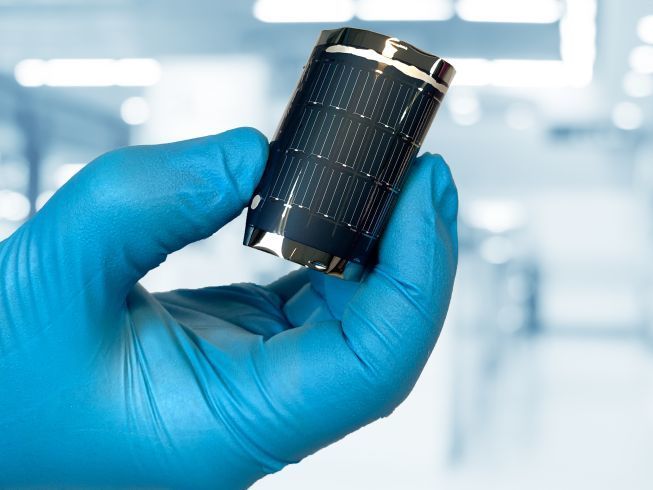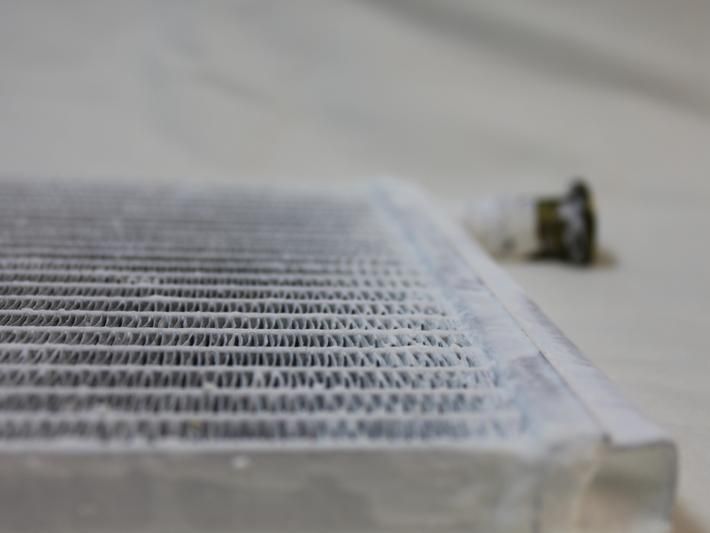21.4% record efficiency for flexible solar cells
Flexible solar cells gain power
A group of scientists at Empa has pushed the efficiency of flexible solar cells to a new limit. Independent measurements revealed an efficiency of 21.4 percent when these types of solar cells convert light into electricity. For comparison: the best efficiency of a non-flexible solar cell made of crystalline silicon is reported at 26.7 percent.

CIGS flexible solar cells consist of very thin layers and include a compound composed of the elements copper, indium, gallium and selenium. The layers are deposited onto flexible polymer substrates, mainly by vacuum processes.
Empa
High efficiency flexible solar cells are processed on a polymer film by a low temperature co-evaporation method for the growth of the thin film Cu(In,Ga)Se2 semiconductor that absorbs the light. Empa scientist Shiro Nishiwaki optimized the composition of the layer and alkali dopants for achieving performance improvement. The researchers then investigated the effects of combined heat and illumination exposure after the processing of solar cells and found a boost in the photovoltaic performance, which remains stable after several months. The solar cell efficiency of 21.38% was independently measured at Fraunhofer Institute for Solar Energy Systems ISE in Freiburg, Germany.
Setting new records for 22 years
Ayodhya Tiwari and his team are doing research on flexible thin film solar cells for more than 22 years. With their profound knowledge of the technology and the fundamental physical processes, they have achieved several efficiency records throughout the years. They started with 12.8% in 1999, moved to 14.1% (2005), 17.6% (2010), 18.7% (2011), 20.4% (2013) and 20.8% in 2019.
Flexible and lightweight solar modules with this technology are especially suited for applications on roofs and facades of buildings, greenhouses, transport vehicles, airships and portable electronics. Empa collaborates with Swiss company Flisom for roll-to-roll manufacturing of lightweight flexible solar modules for such applications.
The research and development work was supported by the Swiss Federal Office of Energy.
Other news from the department science

Get the chemical industry in your inbox
By submitting this form you agree that LUMITOS AG will send you the newsletter(s) selected above by email. Your data will not be passed on to third parties. Your data will be stored and processed in accordance with our data protection regulations. LUMITOS may contact you by email for the purpose of advertising or market and opinion surveys. You can revoke your consent at any time without giving reasons to LUMITOS AG, Ernst-Augustin-Str. 2, 12489 Berlin, Germany or by e-mail at revoke@lumitos.com with effect for the future. In addition, each email contains a link to unsubscribe from the corresponding newsletter.



























































